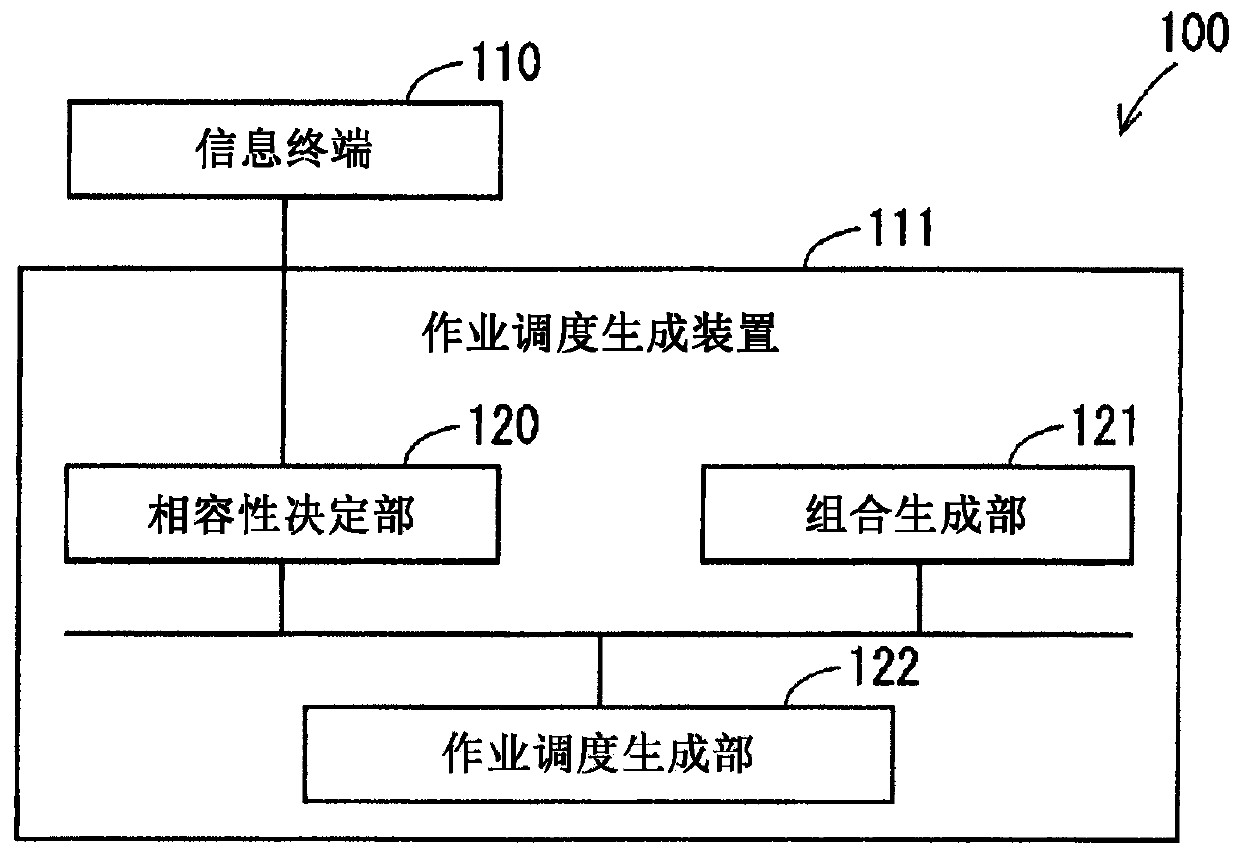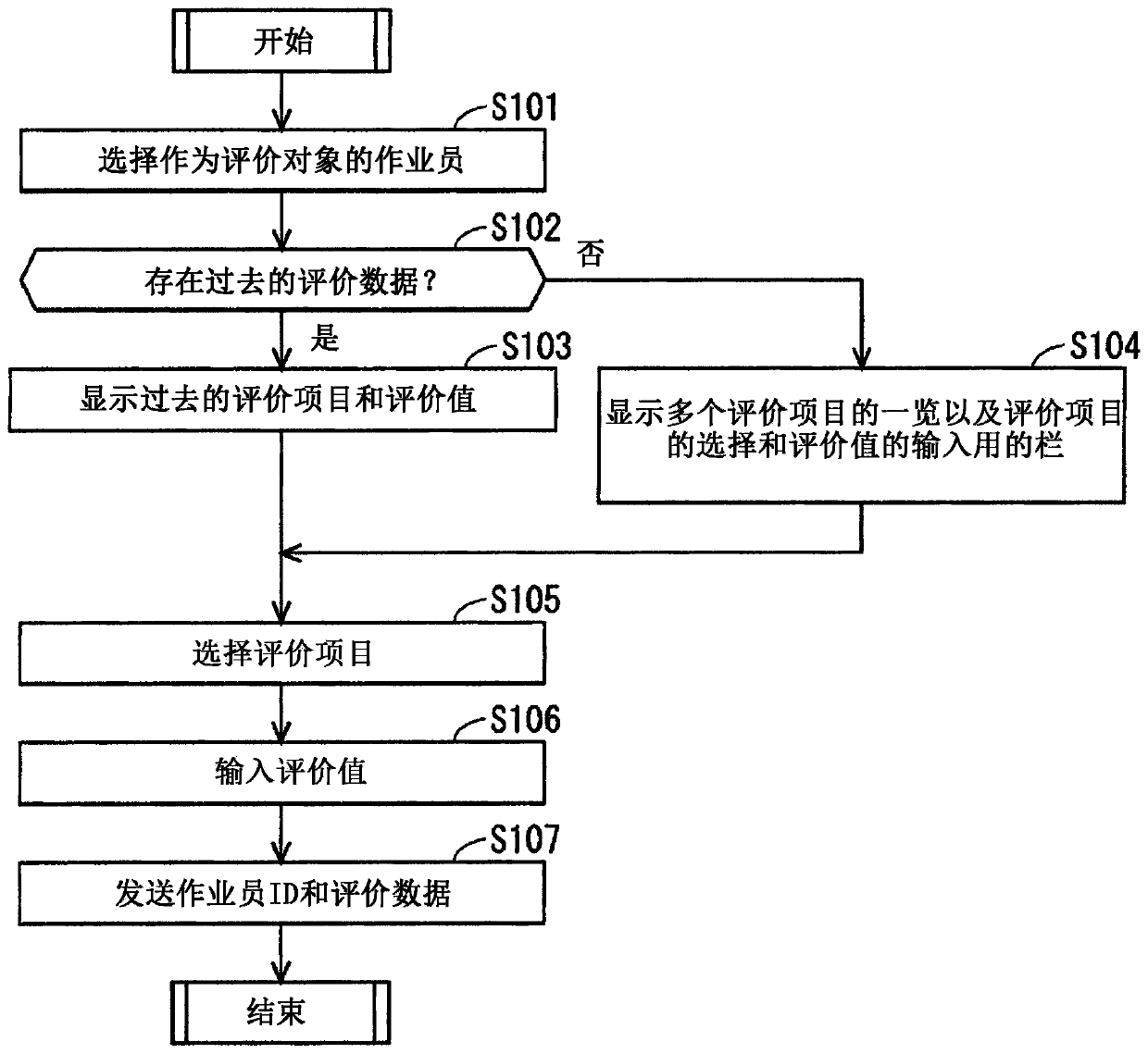Job schedule generation device
A technology of job scheduling and generating device, applied in the direction of instruments, data processing applications, resources, etc., can solve the problems of not considering the smoothness of the operator's ideological communication, the ideological communication affecting the working efficiency, and the inability to generate job scheduling.
- Summary
- Abstract
- Description
- Claims
- Application Information
AI Technical Summary
Problems solved by technology
Method used
Image
Examples
Embodiment Construction
[0031] 1 job scheduling generation system
[0032] figure 1 It is a block diagram illustrating a job schedule generation system including the job schedule generation device according to the first embodiment.
[0033] figure 1 The illustrated work schedule generation system 100 generates a work schedule for providing services such as maintenance and repair of building equipment. The job schedule generation system 100 may also generate a job schedule other than this job schedule.
[0034] The job schedule generation system 100 has an information terminal 110 and a job schedule generation device 111 . The job schedule generation system 100 may have elements other than these elements.
[0035] The information terminal 110 is a smartphone, a tablet, a personal computer, or the like. The job schedule generation device 111 is a personal computer or the like.
[0036] The job schedule generation device 111 is communicably connected to the information terminal 110 and performs in...
PUM
 Login to View More
Login to View More Abstract
Description
Claims
Application Information
 Login to View More
Login to View More - R&D
- Intellectual Property
- Life Sciences
- Materials
- Tech Scout
- Unparalleled Data Quality
- Higher Quality Content
- 60% Fewer Hallucinations
Browse by: Latest US Patents, China's latest patents, Technical Efficacy Thesaurus, Application Domain, Technology Topic, Popular Technical Reports.
© 2025 PatSnap. All rights reserved.Legal|Privacy policy|Modern Slavery Act Transparency Statement|Sitemap|About US| Contact US: help@patsnap.com



